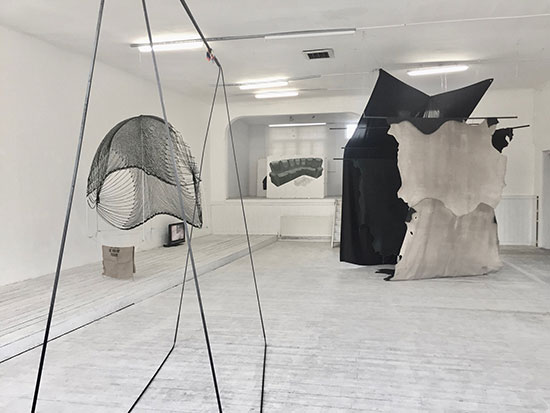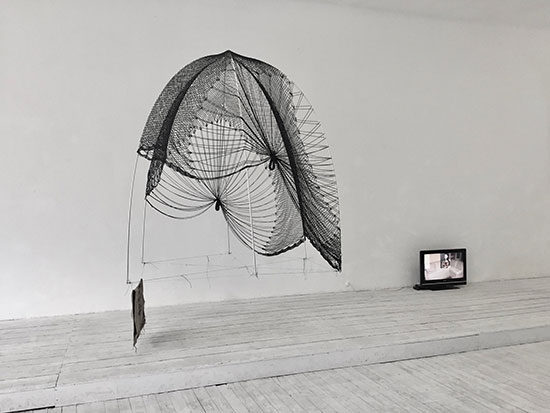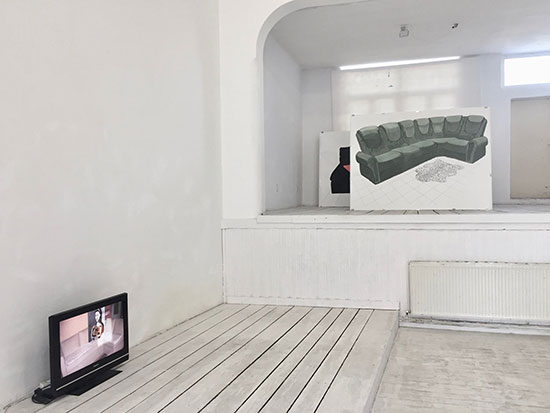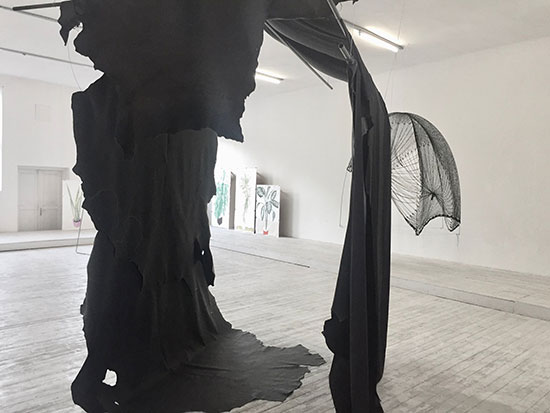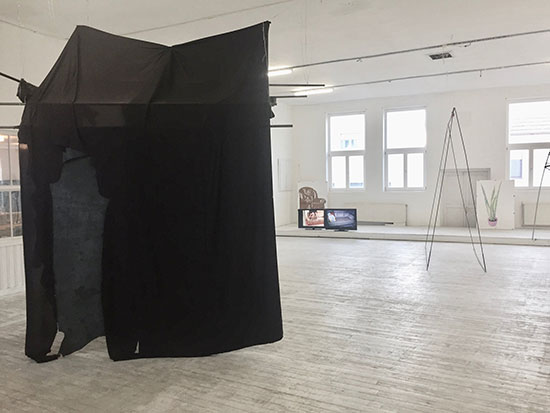kaos
Susi Jirkuff, Anneliese Schrenk
curated by Siggi Hofer
May 12th - June 10th, 2018
The title of the exhibition refers to an Italian literary adaptation by the filmmakers and brothers Taviani, and in this case, it doesn’t stand for total chaos, however, for some contradictions. The film was made in 1984 and is based on short novels written by the author Luigi Pirandello who was born in Caos (Sicilian for Heimat). With this meaning, the title already describes the exhibition much better: Heimat in the sense of presence, and absence (assenza) in the sense of loss or loss of Heimat, respectively. At this point, the exhibition begins and, in the end, connects the works of the artists.
Susi Jirkuff shows works that act as citation of ugly and worn sofa furniture. In return, they are an expression of individual curricula vitae as well as of failure and dreaming. Reinforced by the presentation, Jirkuff’s works oscillate between drawing, painting and object. Almost defiant, they are painted nearly life-sized on paper with Indian ink and ink, and they look like motifs out of children’s colouring books. With its signs of time and humans, the sofa furniture describes an absence that was preceded by a presence. Omitting hope and the creating act, they seem as if they were taken out of the three part video work „3 Femmes“ without any comment. While the drawings build a direct connection to the viewer, predominantly due to their size, the videos do so with the nearly imperceptible movements and the playing with light and shadow. A woman’s portrait of Picasso is added to each of the pictured sofas. The portraits show women who have been in longer relationships with the Spanish artist. Quite contrary to their over-agile and manic creator, they seem diametrically rigid, however, here they appear never without dignity on the shabby sofas.
In her works, the artist Anneliese Schrenk is devoted to the processing of leather since years. Here she builds and spans giant canopies which are evocative of tents made of hide. These makeshift or seemingly incomplete housings oscillate between abstraction and concreteness, between a possible history and its denial. In the room, the sculptures are self-confident even if they are only loosely insinuated and not entirely elaborated, yet, they are attached to their possible functions. By constructing, spanning, coiling, knotting, hanging, with the help of hooks and iron rods, by creating the possibility to let something down, to brush something aside and to extend, to turn inside out, step by step, layer after layer, the desired effect comes into being. The exhibition interior becomes exterior, becomes the infinite expanse to the point of an abstract room. If this place were a different one, if the wind were coming from another direction — in short: if all of the circumstances were different —, so the structures and positions would also have become something else. Also here, everything is static as well as flexible, and, hence, creating an enormous tension.
In both works the human being is invisible. Though, its quest for meaning, sometimes its search for protection or luck, its resignation and its energy, all these are omnipresent.
Almost all the works have been created for this exhibition in 2018.
words: Siggi Hofer
translation: Stefan Thyri
